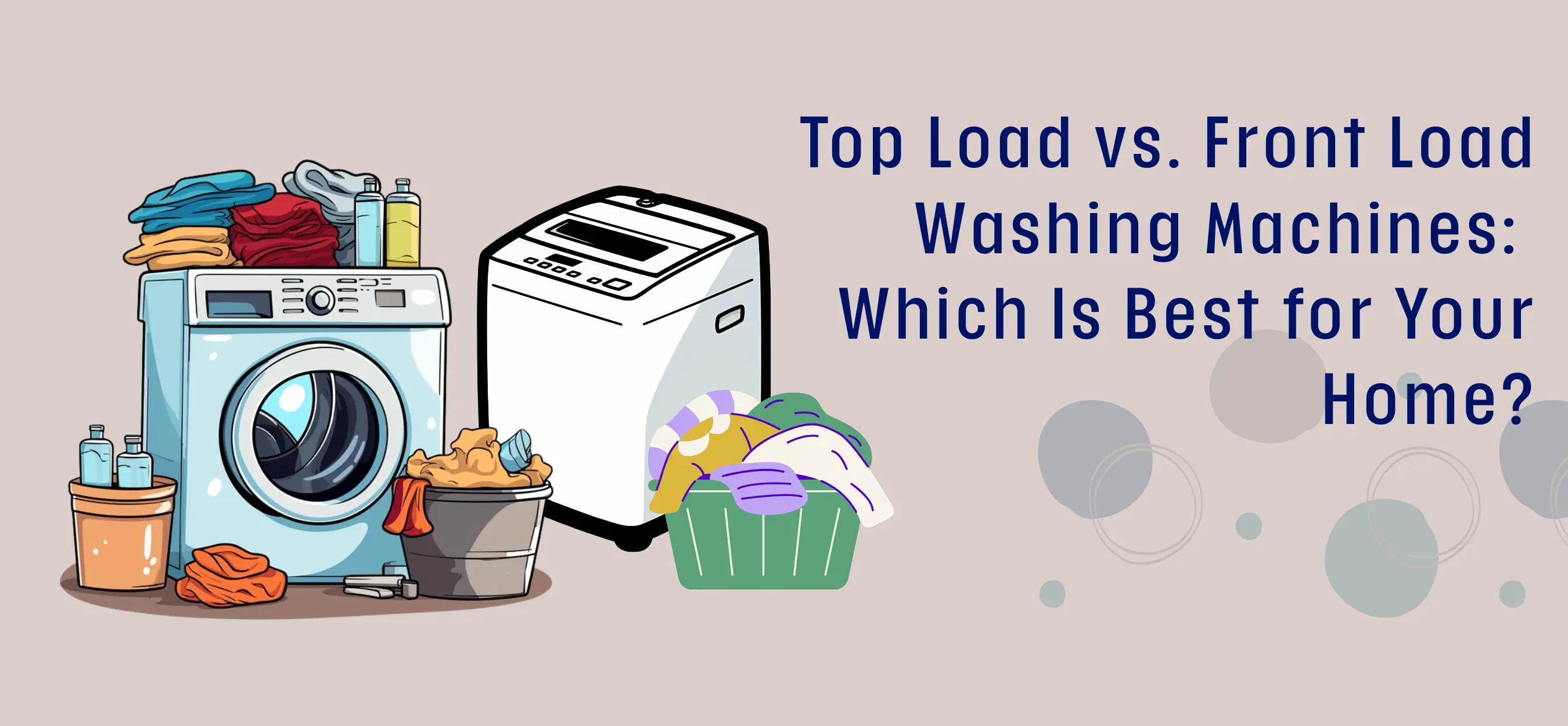Top Load vs. Front Load Washing Machines: Which Is Best for Your Home?
Choosing between top-load and front-load washing machines in 2025 depends on your budget, space, and laundry needs. With India’s diverse households, from compact urban flats to spacious rural homes, each type has distinct advantages.
Top-Load Washing Machines are popular for their affordability (starting at ₹12,999) and ease of use. Brands like Whirlpool and LG offer models with impeller or agitator
technology, ideal for heavy loads like bedspreads or monsoon-soaked clothes. They require less bending, a plus for elderly users, and allow adding clothes mid-cycle.
Smart top-loaders, like CayroShop’s ₹19,999 models, feature app controls and water-efficient cycles. However, they use more water (up to 60 liters per cycle) and
can be harsher on delicate fabrics. A 2024 Ministry of Power report noted top- loaders consume 10% more energy than front-loaders.
Front-Load Washing Machines, favored by urban households, start at ₹22,999 from brands like Bosch and Samsung. Their drum design uses less water (30-40
liters) and energy, with gentler cycles for sarees or woolens. Features like steam cleaning and AI load sensors, found in CayroShop’s ₹29,999 models, remove tough
stains and reduce wrinkles. They stack easily in tight spaces but require bending and have longer cycle times. A 2024 Consumer Reports survey found 70% of front-load
users valued their fabric care and efficiency.
Space and Maintenance: Top-loaders are bulkier but need no special installation.
Front-loaders fit small spaces but may need regular drum cleaning to prevent mold.
Rural users prefer top-loaders for their durability in unstable power conditions.
Verdict: Top-loaders suit budget-conscious, large families with heavy laundry needs.
Front-loaders are best for eco-conscious urban homes prioritizing efficiency and
fabric care. CayroShop’s financing options make both accessible.

